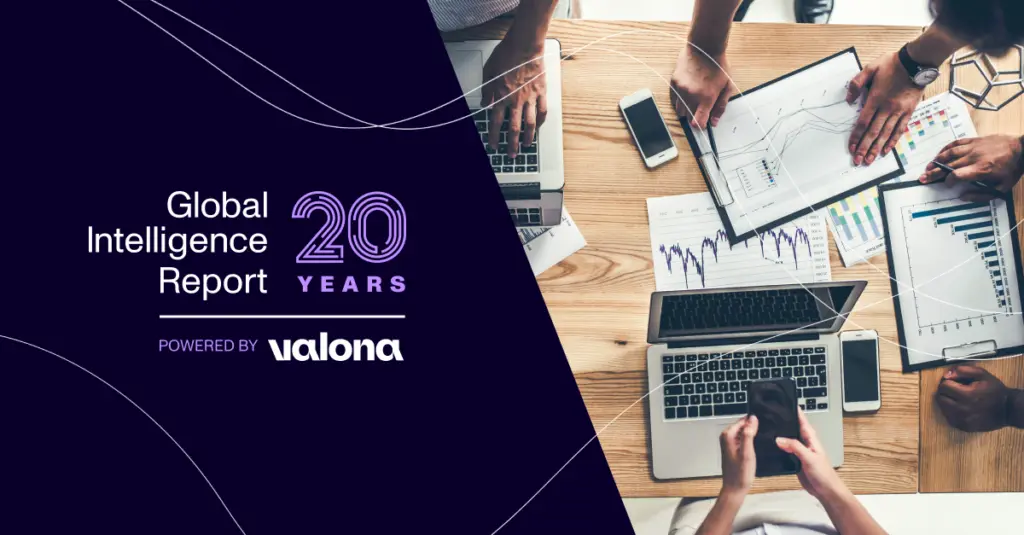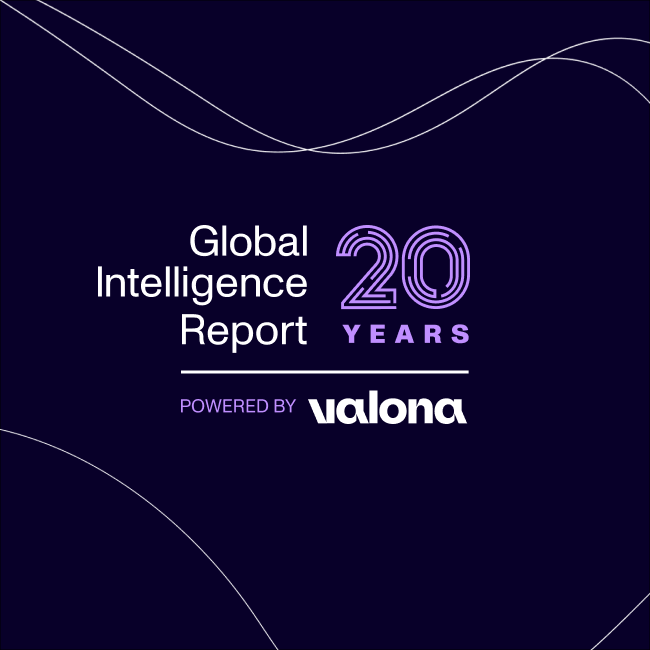
Making sense of change: How post-election dynamics are reshaping market research industry trends
Discover how post-election dynamics are shaping market research industry trends, from tech innovations to evolving methodologies and future predictions.
When a Fortune 500 retailer saw an unexpected 15% sales drop in key Midwest markets just weeks after the recent election, they came to the realization their traditional research playbook had become obsolete. While competitors relied on quarterly surveys and historical data, this company decided to try a different approach.
Using AI-powered sentiment analysis that monitored social conversations across multiple languages and regions, they discovered how specific policy announcements had triggered dramatic shifts in consumer priorities. Within 21 days, they had adjusted their messaging, product mix, and promotional strategy—not only recovering the lost sales but growing market share by 3% while competitors were still trying to figure out what the heck just happened.
This isn’t just an isolated success story—it’s a glimpse into how market research industry trends are being rapidly reshaped by post-election dynamics across the globe.
“2024 has been the biggest election year in human history. Half of the world’s population—some 3.7 billion people—had the opportunity to vote in 72 different countries.”
Kimmo Havu, CEO, Valona Intelligence
This unprecedented wave of political change isn’t just reshaping governments—it’s fundamentally altering how businesses gather intelligence, analyze consumer behavior, and make strategic decisions.
The most successful organizations recognize that post-election environments demand a complete rethinking of market research approaches. Let’s explore the emerging market research industry trends that are helping forward-thinking companies not just navigate uncertainty but turn political shifts into competitive advantage.
The real-world impact on research priorities
Consumer confidence: The hidden driver of post-election spending
“”Voters are extremely upset with their governments. 80% of elections saw incumbent parties losing seats or vote share from their last election cycle.”
Scott alexander, Senior Analyst, Leonardo
This widespread dissatisfaction isn’t just reshaping political landscapes—it’s dramatically altering consumer confidence and spending patterns, creating one of the most significant market research industry trends of the year.
In our research with clients, one retail banking executive shared: “We saw credit card applications jump 18% in some regions after the election, while dropping 12% in others. Understanding why required us to look beyond traditional metrics.”
Smart companies are tracking these changes through:
- Real-time consumer sentiment monitoring across social channels
- Regional spending pattern analysis
- Demographic-specific confidence tracking
These insights reveal how different customer segments are responding to the new political landscape, allowing businesses to adjust targeting, messaging, and offerings accordingly.
Learn how market leaders are adapting to post-election sentiment shifts
Policy-driven market opportunities
The Trump administration’s policy directions are already influencing where companies invest their research dollars. Industries seeing increased research activity include:
- Construction and infrastructure (anticipating potential spending increases)
- Domestic manufacturing (responding to potential trade policy shifts)
- Energy sector (preparing for regulatory changes)
- Healthcare (adjusting to potential policy modifications)
A manufacturing strategy director noted: “We’ve redirected 40% of our research budget toward understanding domestic supply chain opportunities that might emerge from the new administration’s policies.”
Tracking business confidence across supply chains
Companies aren’t just studying end consumers—they’re examining how post-election sentiment is affecting entire supply chains. This includes:
- Vendor investment decisions
- Supplier expansion or contraction plans
- Partner businesses’ confidence in specific sectors
“When it comes to research for business, always prepare for the worst, but hope for the best.”
Aaron Chen, VP of Corporate Strategy, Elisa Corporation
Technology transforming how we gather post-election insights
AI that reveals what people really think (not just what they say)
Traditional surveys often miss the mark after elections because people’s stated opinions don’t always match their actions. Leading companies are now using AI-powered sentiment analysis to:
- Analyze millions of social media conversations in real-time
- Detect emotional patterns in customer service interactions
- Identify disconnects between what consumers say and what they do
A financial services firm recently used this approach to discover that while their customers expressed concern about economic policy changes in surveys, their actual investing behavior showed increasing confidence—knowledge that completely changed their marketing approach.
Predictive models that actually work
Post-election uncertainty makes forecasting difficult, but advances in predictive analytics are helping companies navigate this challenge through:
- Scenario modeling based on potential policy implementations
- Identifying early indicators of market shifts before they become obvious
- Connecting political sentiment to actual purchasing decisions
Our webinar provided fascinating insights on this topic from the geopolitical strategist and author Mark Brolin, who noted that “media is obsessing about politicians, but politics is far from everything. In fact, what happens on the field of practical reality tends to drive politics rather than the other way around.”
This observation is helping companies develop more robust predictive models that focus less on individual political figures and more on underlying economic and social trends that drive longer-term market movements.
Blockchain: Building trust in divisive times
The 24-hour news cycle and constant policy announcements require faster research approaches. Progressive companies are using:
- Automated polling triggered by specific news events
- Social listening tools that detect emerging narrative patterns
- Real-time feedback mechanisms embedded in digital products
These tools help businesses understand immediate reactions to political developments rather than waiting weeks for traditional research results.
Smarter research methods for a divided market
Bridging the quantitative-qualitative divide
Post-election environments often reveal limitations in traditional research approaches. The most effective organizations are now combining methods to get the complete picture:
- Starting with broad quantitative data to identify patterns
- Following up with targeted qualitative research to understand motivations
- Iterating between approaches as new questions emerge
This hybrid methodology helps companies understand not just what is happening in their markets after an election, but why it’s happening—crucial information for effective strategy adjustments.
Building research that respects privacy concerns
Political divisions have heightened privacy sensitivities. Forward-thinking organizations are adapting by:
- Using anonymization techniques that still deliver actionable insights
- Being transparent about how research data will be used
- Developing privacy-first research methodologies that build trust with participants
“Risk management is more art than science—you need to keep it simple.”
Aaron Chen, VP of Corporate Strategy, Elisa Corporation
This applies to research data security as well, with companies implementing straightforward but effective protections for sensitive consumer information.
Understanding the “why” behind post-election behaviors
Behavioral economics is providing crucial insights into seemingly irrational post-election consumer decisions:
- Loss aversion driving purchasing decisions in uncertain times
- Tribal identity influencing brand preferences along political lines
- Status quo bias affecting willingness to try new products during transitions
A telecommunications company used these principles to revamp their promotional strategy, recognizing that customers were more concerned about potential losses than gains in the current environment. This subtle shift increased conversion rates by 32%.
What’s next for market research industry trends
Investment shifting to intelligence systems
Both government agencies and corporations are increasing investments in sophisticated data analytics platforms that can:
- Integrate multiple data sources for more comprehensive insights
- Deliver automated analysis to decision-makers in real time
- Identify subtle patterns human analysts might miss
This investment shift represents one of the most significant market research industry trends, reflecting a growing recognition that traditional research approaches alone aren’t sufficient in today’s rapidly changing political and economic landscape.
The rise of specialized research networks
We’re seeing a clear market research industry trend away from one-size-fits-all research providers toward specialized networks of experts who can provide deeper insights into specific segments:
- Industry-specific research collaboratives
- Regionally focused intelligence networks
- Demographic specialists with authentic connections to key communities
This decentralized approach delivers more nuanced understanding of how different populations are responding to the post-election environment.
“You would have to look at the individual cases… What are the individual stories and kind of the political and socio-economic realities within countries that have been unsatisfied with status quo and what that could lead to with whatever government comes in next.”
Riikka Paarma, Chief Sustainability Officer, Halton Group
Her insight applies broadly to market research methodology—successful companies are now building networks that provide this nuanced, contextual understanding rather than relying on generalized global insights.
AI that enhances (rather than replaces) human insight
Perhaps the most important market research industry trend is the balanced integration of AI with human expertise. The most successful organizations are using AI to handle routine research tasks while elevating their human teams to more strategic roles:
- Automated data collection and initial analysis
- Human interpretation of complex patterns
- AI-assisted scenario planning based on multiple potential outcomes
“Risk management is more art than science—you need to keep it simple.”
Aaron Chen, VP of Group Strategy at ELISA Corporation
This balanced approach recognizes that while technology can process more information than ever before, human judgment remains essential for truly understanding post-election market dynamics.
Turning post-election insights into action
The political landscape has changed, and so have market research industry trends. It’s no longer enough to track simple metrics or rely on historical patterns. Today’s market leaders are using sophisticated tools and methodologies to understand the complex interplay between politics, policy, and consumer behavior.
At Valona Intelligence, we help businesses navigate these shifts with confidence. Our platform combines cutting-edge AI with expert human analysis to deliver actionable intelligence across 115 languages and 150 countries. This global perspective helps you spot patterns and opportunities others miss in the post-election landscape.
Our solutions include:
- Real-time sentiment analysis across multiple markets and languages
- Predictive analytics that connect political developments to business impacts
- Customizable dashboards that deliver relevant insights to different stakeholders
Want to understand how post-election dynamics are reshaping market research industry trends and how they’ll specifically impact your business?
Join our exclusive on-demand webinar, “How Post-Election Dynamics Impact Market Research & Strategy,” featuring insights from market research leaders who are successfully navigating this new landscape:
ACCESS THE ON-DEMAND WEBINAR for:
- Expert predictions on upcoming regulatory and policy shifts
- Industry-specific impact analysis for key sectors
- Practical frameworks for adjusting your research approach
Valona Intelligence has been helping Fortune 500 companies understand political and market shifts since 1999. Our AI-powered platform harvests, translates, and analyzes signals across 150 countries and 115 languages to help you see the patterns your competitors miss—turning months of research into minutes of decisive action.
FAQs
How are post-election dynamics changing consumer behavior?
Post-election dynamics reshape consumer behavior through shifting confidence levels, changing priorities based on anticipated policy impacts, and evolving brand preferences aligned with political identities. These changes vary significantly by region, demographic group, and industry sector.
What technologies are most effective for post-election market research?
The most effective technologies include AI-powered sentiment analysis that works across languages, predictive analytics platforms that can model multiple scenarios, blockchain systems for ensuring data integrity, and real-time polling tools that capture immediate reactions to policy announcements.
What is the current trend in research?
The current trend in research highlights the integration of advanced technologies like AI and machine learning, a shift towards agile and remote methodologies, and an increased focus on real-time data analysis.
How can businesses prepare for post-election market shifts?
Successful businesses prepare by implementing continuous monitoring systems rather than point-in-time research, developing scenario plans for multiple potential policy outcomes, segmenting their analysis by region and demographic, and shortening their insight-to-action cycle to respond more quickly to emerging trends.




